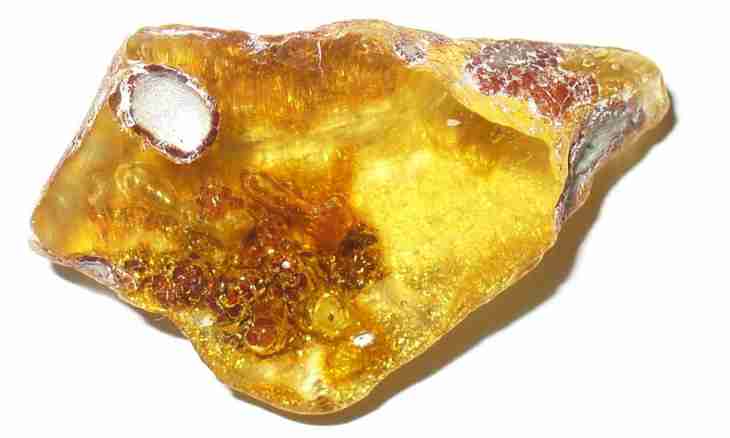Amber was known to mankind for many centuries before a new era. In a raw state archeologists repeatedly found fragments of this mineral on parking of the ancient person. Possibly, primitive people believed that amber has magic properties and is capable to save from illnesses.
Instruction
1. Amber is a pitch of coniferous trees which is in the hardened state. The trees which gave life to pieces of this organic material grew on the planet several tens of millions years ago. After death they quite often appeared in sea deposits. Wood slowly became similar to brown coal, and resinous substance turned into amber. Sea waves gradually washed away mineral from the remains of deposits.
2. The amber extracted in nature in considerable weight is presented by the small stones having in the diameter no more than 3 cm. It is possible to find less often larger copies which weight reaches 3-5 kg. Yellowish color is characteristic of amber though this mineral can have reddish, brown and even white shade. Being in the open air, amber becomes more dark and fragile. On stones cracks can appear.
3. It is considered that the largest reserves of amber are in the basin of the Baltic Sea. Millions years ago in this territory the land where majestic coniferous forests rustled was located. In those days the climate on the planet often changed. Trees actively reacted to such changes, plentifully emitting pitch which hardened when warming, turning into the material on properties reminding a stone.
4. The pitch-crude turpentine flowing from wood took the most bizzare shapes reminding drops, clusters, tumors and outgrowths. These intricate figures separated from trunks and drop to the soil. Process of release of pitch could go long enough, quite often it stopped, and after a while was resumed. It led to formation of a set of the stratifications defining the invoice of future amber.
5. Being after falling off from trees in a forest laying, pitch became stronger, its resistance to aggressive factors of the environment increased. And here those samples which developed in the conditions of the boggy area most often remained fragile. At the last stage of formation future amber was washed away to the water basin where biochemical processes continued.
6. The geochemistry and hydrodynamics of the water environment to which mineral got had strong impact on formation of amber. Rich with silt and potassium of water as well as possible were suitable for gradual transformation of pitch of coniferous trees into bright and peculiar mineral which began to be called amber subsequently. Looking at products from this of material, fantastic on the beauty, it is difficult to present how long way was done by usual pitch before could turn into amber.

